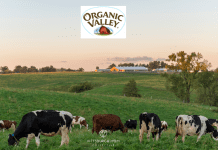At Shady Side Academy’s two elementary schools, classes have never been limited by walls. Teachers in all grades and disciplines take lessons outside, where students can engage with nature and explore the world around them.
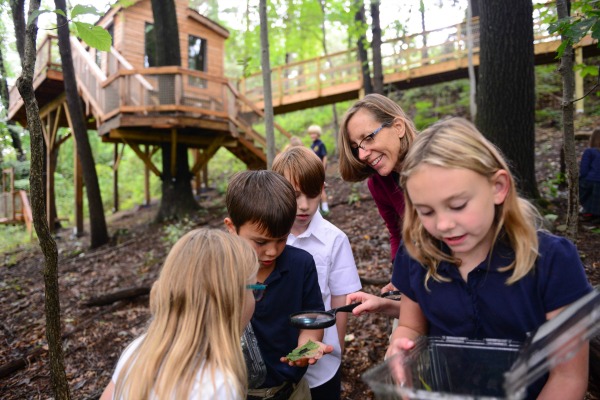
The SSA Country Day School in Fox Chapel sits on 17 wooded acres, offering endless outdoor learning opportunities. In addition to a playground, athletic field and garden, the campus includes an outdoor classroom and a brand-new treehouse classroom in the woods.
“We view our outside spaces as an extension of our classrooms,” said Dr. Jennifer Asmonga, interim head of Country Day School. “Each day the forest and hillside provide new and exciting experiences for students to explore. Outdoor exploration enables children to be creative and utilize problem-solving skills in an authentic environment.”
The only one of its kind in Western Pennsylvania, the treehouse features a 12×20-foot enclosed classroom with Murphy tables that fold down and large windows that provide fresh air and natural light. A 30×30-foot observation deck surrounds the classroom, and a suspension bridge runs to a lookout platform on a neighboring tree.
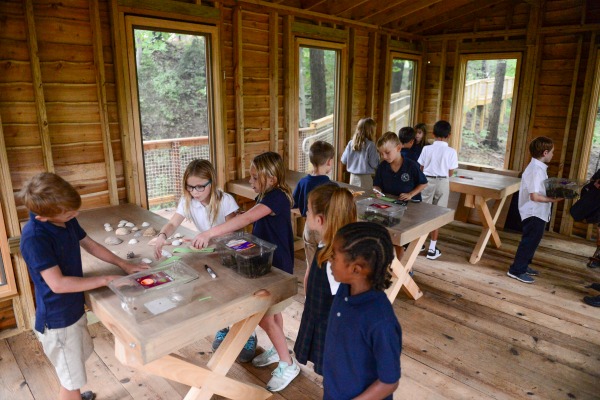
Country Day’s teachers are taking full advantage of the treehouse as a learning space. In science, second, fourth and fifth graders use it as a geology lab, collecting and analyzing rock and soil samples, while third graders study the layers of the forest by observing birds and caterpillars in the canopy, searching for bugs and salamanders in the woods, and building habitat terrariums. In language arts, fifth graders use the sights and sounds of the treehouse as inspiration for writing nature poetry. Music classes have found the treehouse stairs to be a perfect spot for singing – and swaying on the suspended bridge is fun too.
Likewise, at the SSA Junior School in Point Breeze, outdoor learning and exploration is an integral part of the school day. The seven-acre campus includes three playgrounds, an athletic field, several educational gardens and a wooded hillside.
“We believe that children should always have the opportunity to be outside,” said Ellen McConnell Sanderson, head of the Junior School. “Whether it’s taking a hike in the woods or making wooden boats to float down a stream, our students learn in the dirt as well as at their desks. One of the beautiful things about our campus is that it allows children’s imaginations to run free. They chase unicorns, look for spiderwebs, build forts and even sled down the hill in the winter.”
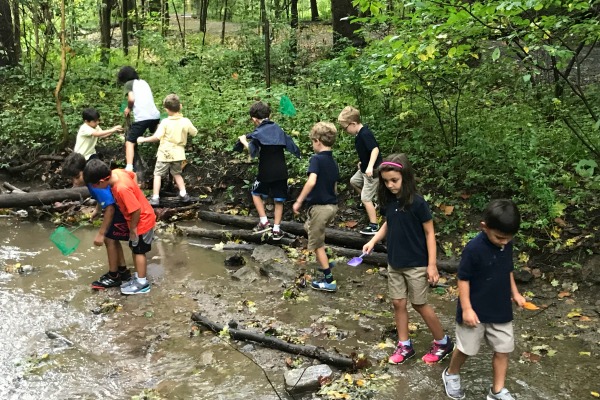
The campus sits adjacent to Frick Park, offering teachers and students off-street access to its acres of woods and trails. In PE classes, students hike and run the park’s trails regularly. As younger students hike over, under or around logs and stones, they talk about not letting obstacles stop them in life. Older students venture onto more challenging trails and work to improve their time in the mile run. In science, fifth graders help kindergarteners learn about the water cycle in Frick Park, recording their younger buddies’ observations on an iPad. In art, students create fairy doors to add to the park’s existing collection; after pondering what happens in the winter, they even decided to make some doors higher in the trees in case the original doors were blocked by snow. Several after-school programs give students additional opportunities to enjoy the park, including a cross country team, a Girls on the Run team, and an enrichment class called Woods Play.
Both elementary campuses benefit from Shady Side’s unique SSA Farm program, a sustainability education initiative integrated into the PK-12 curriculum.
As part of the farm program, the Junior School has five raised garden beds and several egg-laying hens, which students help to care for. Science classes utilize the garden and chickens to study plant life cycle, beneficial insects, animal biology, nutrient cycling and taking food from seed to plate. Pre-kindergarten students harvest fresh food from the garden for cooking lessons that correlate with their “Letter of the Week” curriculum. First and fourth grade science buddies learn about Mesoamerican agricultural practices by planting chinampas (floating garden beds) and starting their own salsa garden. Third and fifth grade science buddies design and conduct seed experiments to test variables of plant growth.
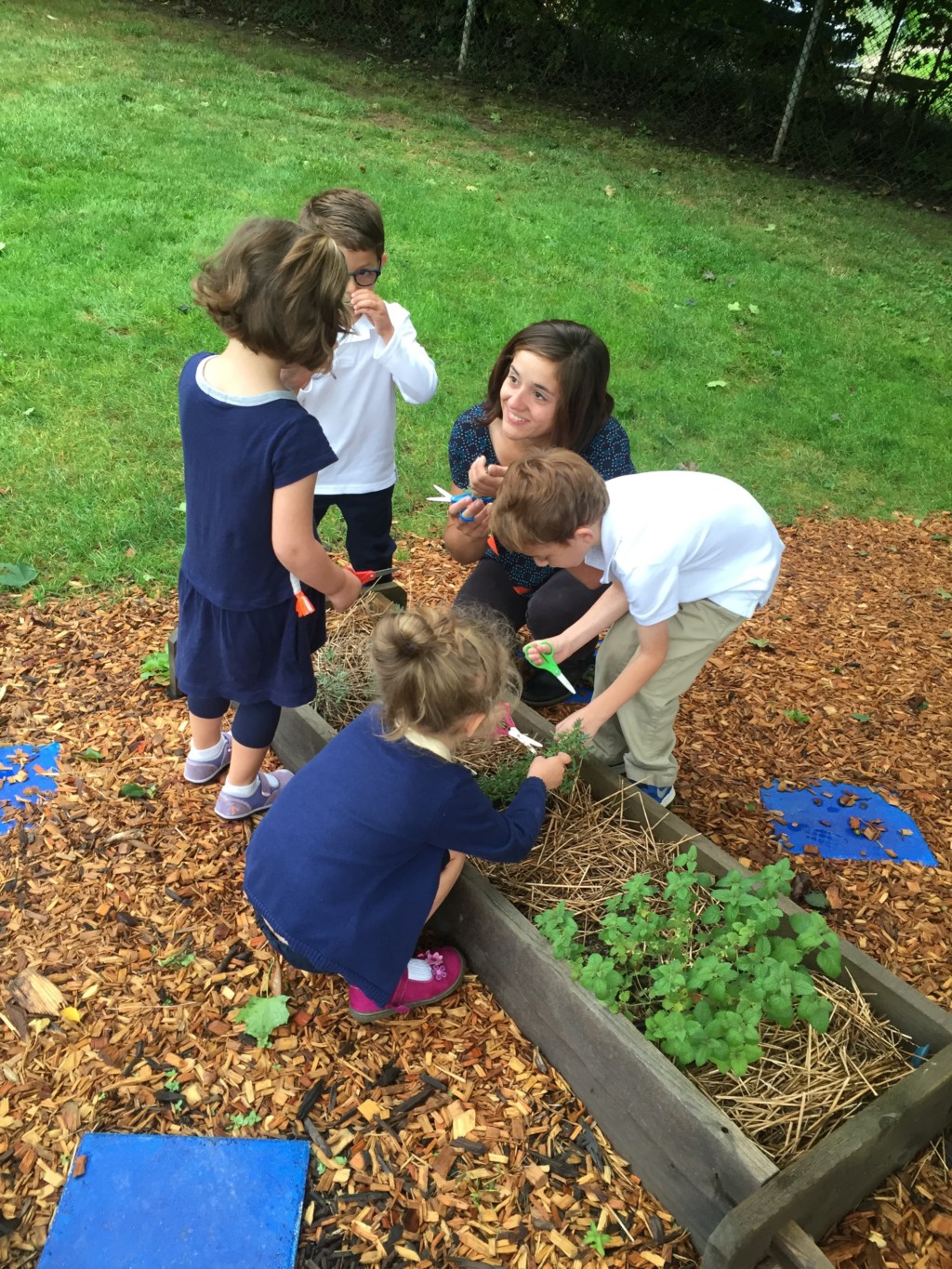
Country Day School has a U-shaped garden bed, which students help to plant and maintain. Students begin seedlings in the science lab and transplant them to the garden, and they harvest fresh veggies to make salads and salsa. They also visit the 4,000-square-foot Senior School farm across the street to observe first-hand how bees aid in pollination and how chickens provide nutrients and control insects.
To learn more about Shady Side Academy’s two elementary campuses, visit www.shadysideacademy.org/elementary-schools. Both campuses are hosting fall open houses in October; RSVP online at www.shadysideacademy.org/visit.



